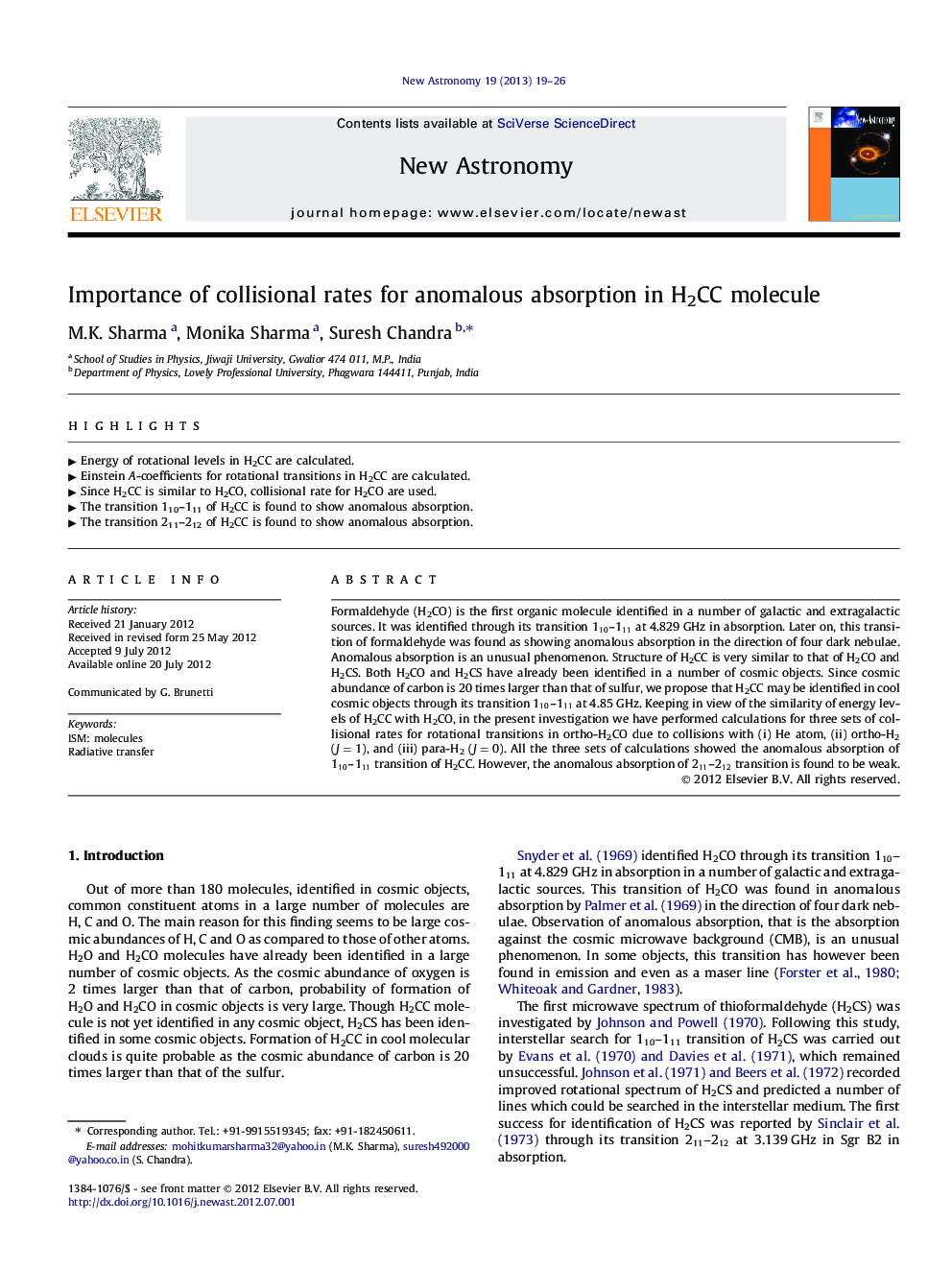| Article ID | Journal | Published Year | Pages | File Type |
|---|---|---|---|---|
| 1779117 | New Astronomy | 2013 | 8 Pages |
Formaldehyde (H2CO) is the first organic molecule identified in a number of galactic and extragalactic sources. It was identified through its transition 110110–111111 at 4.829 GHz in absorption. Later on, this transition of formaldehyde was found as showing anomalous absorption in the direction of four dark nebulae. Anomalous absorption is an unusual phenomenon. Structure of H2CC is very similar to that of H2CO and H2CS. Both H2CO and H2CS have already been identified in a number of cosmic objects. Since cosmic abundance of carbon is 20 times larger than that of sulfur, we propose that H2CC may be identified in cool cosmic objects through its transition 110110–111111 at 4.85 GHz. Keeping in view of the similarity of energy levels of H2CC with H2CO, in the present investigation we have performed calculations for three sets of collisional rates for rotational transitions in ortho-H2CO due to collisions with (i) He atom, (ii) ortho-H2 (J=1J=1), and (iii) para-H2 (J=0J=0). All the three sets of calculations showed the anomalous absorption of 110110–111111 transition of H2CC. However, the anomalous absorption of 211211–212212 transition is found to be weak.
► Energy of rotational levels in H2CC are calculated. ► Einstein A-coefficients for rotational transitions in H2CC are calculated. ► Since H2CC is similar to H2CO, collisional rate for H2CO are used. ► The transition 110–111 of H2CC is found to show anomalous absorption. ► The transition 211–212 of H2CC is found to show anomalous absorption.
